Legend 01: A modern man with insight, Yoshisuke Aikawa
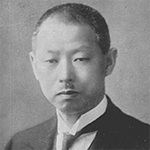
Yoshisuke Aikawa
Born in Yamaguchi Prefecture on 6th November, 1880. Graduated from Machinery Section of Engineering Department, Tokyo Imperial University (now University of Tokyo). In 1928, became president of Nihon Sangyo, from which the name ‘Nissan’ was derived. Established Jidosha Seizo Co., Ltd. (Nissan Motor's former corporate name) on 26th December, 1933. After stepping away from his duties as president of Nissan Motor and becoming company chairman in 1939, entered politics when selected to be a member of Japanese House of Peers (now House of Councillors) in 1943. Died in 1967.
Start of the company's history
You could find some paved roads in the Japanese cities of the 1930s, but most roads and streets in those days remained covered with sand and pebbles, just as they had been during the Edo Period (1603-1868). On the other hand, railways had become a favourite means of long-distance transportation among the Japanese people. It was under these circumstances that an automobile was driven from Osaka to Tokyo-nearly 500 km-without encountering any problems. The idea of driving such a long distance was in itself a novel notion but the fact that the vehicle in question was not a General Motors or Ford product but a genuine made-in-Japan car meant that this was indeed an unprecedented accomplishment. The automobile was called the Datson, the forerunner of Datsun. And the man who nurtured and developed the car and established the Nissan Motor and made it into one of the world’s greatest automobile manufacturers was none other than Yoshisuke Aikawa himself.
Nissan Motor celebrates its 80th anniversary this year, counting from 1933, when Jidosha Seizou (Automobile Manufacturing) KK was founded on the 26th of December of that year. Nevertheless, we can trace its history all the way back to 1914 if we look for the first sprouts of the Nissan cars that we see today.
In March 1914, Kwaishinsha Jidosha Kojo (Kwaishinsha Motor Car Works, Co.) in Azabu Hiroo in Tokyo, operated by one Masujiro Hashimoto, made an open-top four-wheel passenger car. They named the car the DAT, formed from the initials of three investors in the company, Kenjiro Den, Rokuro Aoyama, and Meitaro Takeuchi. In Japanese, the sound was similar to the word ‘rapid’, as in the case of a fleeing rabbit.
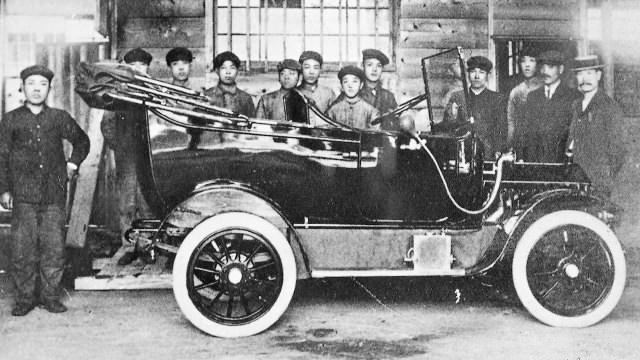
Kaishinsha’s employees standing around DAT Car completed in 1914.
In Osaka, Jitsuyo Jidosha Seizo was founded in 1919. It manufactured a Gorham-style three-wheel motor car designed by William R Gorham, who later became a managing director and the head engineer of Nissan Motor. Jitsuyo Jidosha Seizou and Dat Jidosha Shokai (Kaishinsha Jidosha Kojo changed the name) merged in 1926, to give birth to Dat Jidosha Seizou KK in Osaka. In 1930, the new company developed its first small car, which was named the Datson, meaning ‘son of DAT’, because the car shared some parts and components with the DAT. It was a Datson that successfully endured the harsh conditions and completed the test run between Osaka and Tokyo in 1930. Dat Jidosha Seizou KK was subsequently purchased by Tobata Imono, which was headed by Yoshisuke Aikawa (1880-1967).
Learned in America
Yoshisuke Aikawa (1880-1967) was one of the greatest businessmen of the Showa Period (1926-1989) in Japan. A politician and the founder of Nissan Motor, he was born in Oouchi village (now the city of Yamaguchi) in Yamaguchi Prefecture on the 6th of November 1880. He was a true blue blood: his father was the 10th head of the Aikawa Family, a local lord serving the Choshu clan, and his mother was a niece of Kaoru Inoue, a central figure in the powerful Choshu clan that helped overthrow the Edo Shogunate and later the holder of key financial and diplomatic posts in the Meiji Government. However, Aikawa never aspired to follow the path of becoming a politician or a businessman. Kaoru Inoue, who had heard about Aikawa from his elder sister, Aikawa’s grandmother, called Aikawa and told him to ‘be an engineer’. Aikawa accepted that advice without any hesitation or conditions and, after graduating from Yamaguchi High School under the old system, he went on to graduate from the Machinery Section of the Engineering Department of Tokyo Imperial University (now Tokyo University) in 1903.
A member of a powerful family with unrivalled influence in the business world, Aikawa could have chosen anything he fancied for his profession, but while attending a graduate course, he decided to work as a mechanic, receiving a mere 45 pennies a day at Shibaura Seisakusho (now Toshiba), where he laboured without revealing his true identity and his academic background. His determination to go into manufacturing was shaped by several incidents: when he called on Kaoru Inoue, he was disgusted by the sight of businessmen flocking around the politician trying to please him to extract favours, which made him swear never to work in the business world, and he became almost fatally ill while at university, which formed his desire to engage in work that gave him a sense of being alive and eventually led him to work in manufacturing. There is no doubt that knowing the manufacturing site inside out was a contributing factor to the later success of his production operations. This was a forerunner of the now well-known ‘Site First’ concept. He also lived a Spartan life, which we can see from his photographs, with the cropped hair that he wore all his life, much like a samurai.
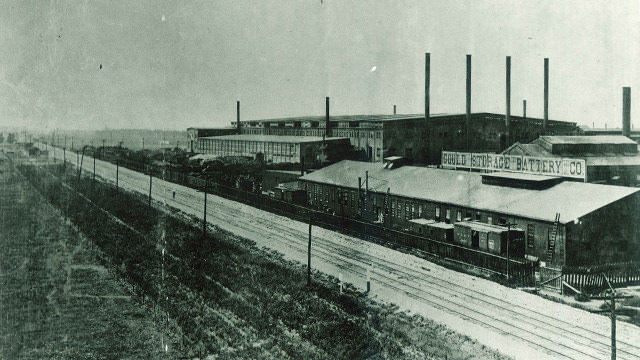
Curiously enough, that was the year that General Motors was founded. Having encountered the automobile industry, which was unknown territory, Aikawa felt that it had unlimited potential, but he chose to return to Japan to manufacture malleable joints using the technology that he had mastered in the US. He founded Tobata Imono (Foundry) KK in 1910 in Tobata-cho in Fukuoka Prefecture (now Tobata Ward, Kitakyushu City), with the support of Kaoru Inoue. He named the brand Hyotan, or gourd, with the aim of creating joint surfaces as flat as those of a gourd, and the product proved to be a great success.
Tobata Imono, the forerunner of today’s Hitachi Metals, started to manufacture malleable iron castings using an electric furnace, the first in the industry. As he founded several companies and purchased others, Aikawa started to be recognised by the industry and society for his ability as a dynamic young businessman.
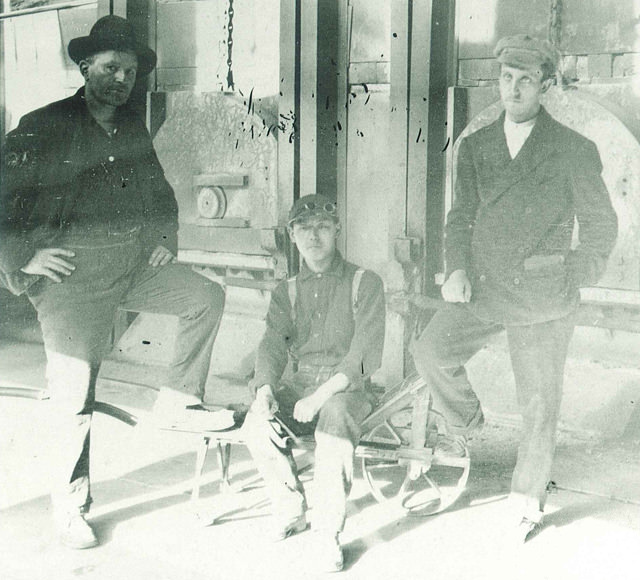
Study in America
Yokohama, the home of Nissan
Yoshisuke Aikawa was given a big job that he did not want in 1928, when he was asked to head up the restructuring of Kuhara Kogyo, which was led by his brother-in-law, Fusanosuke Kuhara. Aikawa declined the request firmly at first, but eventually he accepted it and then tackled the job with everything he had. He became the president of the ailing company and renamed it Nihon Sangyo (Notes: Nihon=Japan, Sangyo=Industry). The general practice at the time was to give a company the name of the family that owned or managed it, but Aikawa deliberately avoided crowning the company with his own name. This approach was based on his belief that a company belonged to its shareholders all across Japan and as such should contribute to the well-being of Japanese society and to the public interest.
This was the moment when Nissan , derived from “Ni”hon + “San”gyo, was born.
Aikawa went further than that. He restructured Nihon Sangyo to make it a public company and he started to establish the Nissan Konzern conglomerate, bringing Nihon Kogyo, Hitachi, Nissan Chemicals, and Nissan Life Insurance under the Nissan umbrella.
Nihon Sangyo grew to be a huge group comparable in size and status to the Mitsui, Mitsubishi, and Sumitomo zaibatsu or conglomerates, but it was fundamentally different from those other corporate groups in its basic characteristics. The other zaibatsu were of a feudal and conservative nature, owned and controlled by families, but Nihon Sangyo had modern characteristics; its companies were public, with their capital paid in by anonymous shareholders and the profits returned to them. This was the true value that Aikawa infused into his corporate group and his leadership brought about revolutionary changes in Japanese company management in later years. Aikawa was also ahead of the game in placing people with engineering backgrounds in top positions at his companies.
Nissan Motor moved its headquarters from Tokyo’s Ginza district to Yokohama’s Minato-Mirai (MM21) area in August 2009. The company had its reasons for choosing Yokohama even though most major Japanese companies have their headquarters in Tokyo. The Yokohama Plant Guest Hall in Takara-cho in Yokohama’s Kanagawa Ward, in Kanagawa Prefecture, where the Nissan Engine Museum is located, was established in 1934 as the first Nissan headquarters building and it remained the company’s HQ until 1968. Even now this is the address of Nissan Motor’s head office in its legal registry.
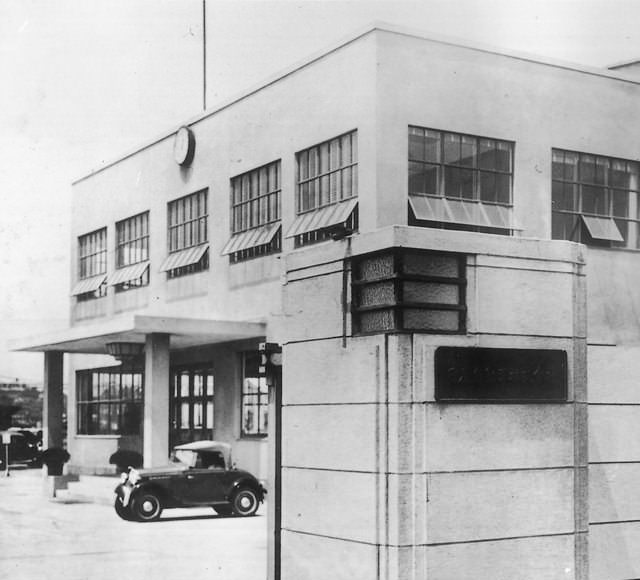
Nissan Motor Co.’s first main plant (today’s Yokohama Plant), completed in 1934.
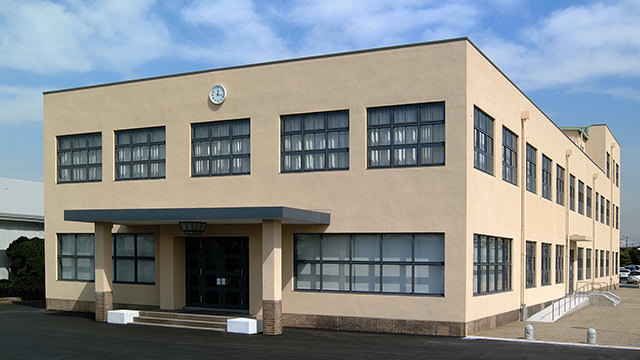
Yokohama is a place where Nissan has its roots and the move in 2009 was in a sense a homecoming. The Yokohama Plant, a major Nissan engine manufacturing plant, is located nearby and started producing the VR38 unit for the Nissan GT-R in 2007. It was Yoshisuke Aikawa who chose this location.
Aikawa was quick to become convinced of the future possibilities of cars and the automobile industry, while he insisted that Japan needed to produce superior cars because he was concerned that the automobile market in Japan was controlled by imported vehicles from Western countries.
Dat Jidosha Seizou successfully developed the Datson, but the parent company decided to sell Dat Jidosha Seizou because of the huge amount of money needed to produce and sell Datson cars. In August 1931, Tobata Imono, led by Aikawa, purchased Dat Jidosha Seizou, which became Tobata Imono’s Jidosha Section. In April 1932, Tobata Imono opened a Dat Jidosha Shokai office in Ginza as its sales foothold in Tokyo. However, in March, one month prior to the opening, Dat Jidosha Shokai was ravaged by a flood out of the blue as it was preparing for the opening. It was then whispered that the ‘son’ in Datson phonologically sounded similar to son, which meant ‘loss’ in Japanese, so the brand name was changed to make it Datsun, which phonologically was associated with ‘the rising sun’. And so the Datsun name was created.
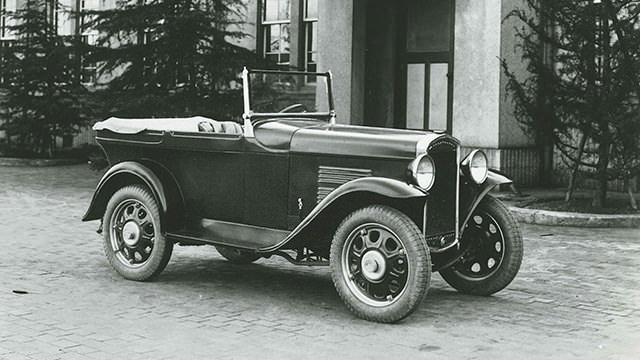
Not only the founder of Nissan...
In the early 1930s, the Ministry of Commerce and Industry (now the Ministry of Economy, Trade, and Industry) was promoting the production of Japanese cars with increasing vigour. Aikawa judged that the time was right and organized the establishment of Jidosha Seizou KK in Yokohama on the 26th of December 1933, founded jointly by Nihon Sangyo (contributing six million yen) and Tobata Imono (four million yen) with an initial capital of 10 million yen. Aikawa was the president of both founding companies and as a matter of course he was named the president of the new company. At the first shareholders’ meeting, held on the 30th of May 1934, Jidosha Seizou KK was renamed the Nissan Motor Co., Ltd. as it became a wholly owned subsidiary of Nihon Sangyo. This was the birth of Nissan Motor in both name and reality. As stated above , the name Nissan was derived from the name of the parent company, Nihon Sangyo.
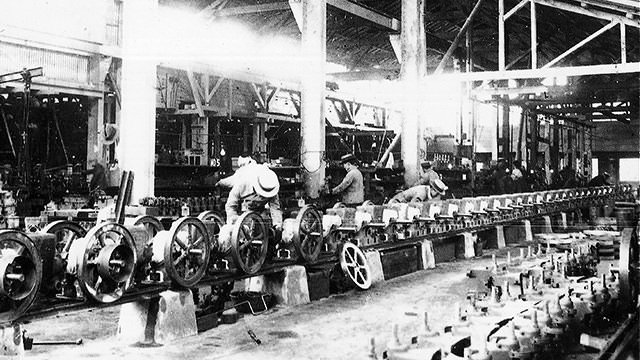
At the same time, Nissan obtained a huge filled ground of 661,200 square meters (163.4 acres) in Kanagawa Ward in Yokohama to build a state-of-the-art production facility, into which Tobata Imono’s Jidosha Section in Osaka was moved. And finally, in April 1934, the first Datsun saloon made in Yokohama rolled off the line. Annual production volume was only 202 units in 1933, when the production facility was located in Osaka, but it jumped to 940 units in 1934, when it moved to Yokohama. In 1935, when a 70-metre-long conveyor line was completed, integrated manufacturing of the chassis and body started, thanks to which annual production reached 3,800 units. Output increased to 6,163 units in 1936 and 10,227 units in 1937, making Nissan the largest car producer in Asian countries among companies financed with Japanese capital. Nissan also started exporting cars, although the volume was still small.
In this way, Aikawa’s ambitious dream came true and the groundwork was laid for Nissan to make a leap onto the world stage. In May 1939, Aikawa became the chairman of the company because he thought that he had achieved his mission.
In 1943, Aikawa was selected to be a member of the Japanese House of Peers (now the House of Councillors) and so he went into politics. The House of Peers was the predecessor of the House of Councillors and members were selected by the emperor instead of by general election. In 1943, Aikawa set up a foundation for small and medium-sized businesses (SMBs), financed by Nissan Group member companies, and became the chairman. From that point on, he was fully committed to promoting the business activities of SMBs. After the war, large enterprises and farmers benefited from government policies in various ways, but SMBs had no choice but to operate in old-fashioned business conditions that treated them badly. Aikawa believed that it was SMBs that underpinned the industrial foundations of Japan.
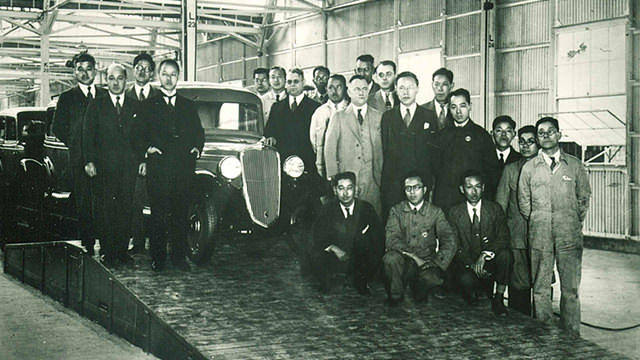
In 1953, elected to the House of Councillors, he formed the Road Planning Research Committee and became its chairman, a development that reflected his background in the automobile industry. After that, he served in many important roles and positions, including as chairman of the National SMB Association, a top advisor on the economy to the Kishi Cabinet, a member of the Industrial Planning Council, and honorary president of Toyo University. He was honoured with a Grand Cordon of the Order of the Sacred Treasure. He died in 1967 at the age of 86, after an illness, having lived an eminent life of service and achievement amidst often stormy times.
Not content with being born into a distinguished family and the positions that his background opened up to him, Yoshisuke Aikawa laboured on the front lines of a production site as a mere factory mechanic and worked hard to acquire technical skills. He also devoted himself to the future of the Japanese car industry. Not only as the founder of Nissan Motor but also as a great figure who wrote an important page in the history of the Japanese automobile industry, Yoshisuke Aikawa stands out as one of Japan’s greatest men, whose stories should be handed down from generation to generation.
Writer Profile
Shizuo Takashima
Born 1938 in Gunma Prefecture, Japan.One of the editor launched Japanese leading automobile magazine called “Car Graphic”. After serving as deputy editor of Car Graphic, launched “Super CG(Car Graphic)” as a magazine seeking dreams and romance for the car in 1989. Chairman of the All Japan Classic Camera Club (AJCC) as well.

